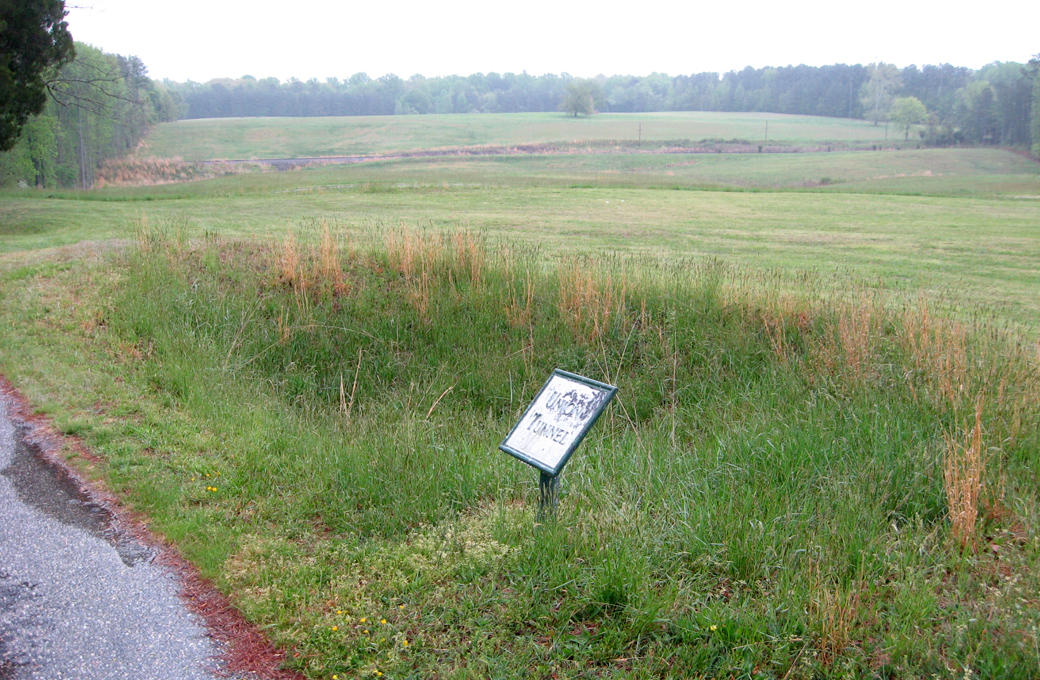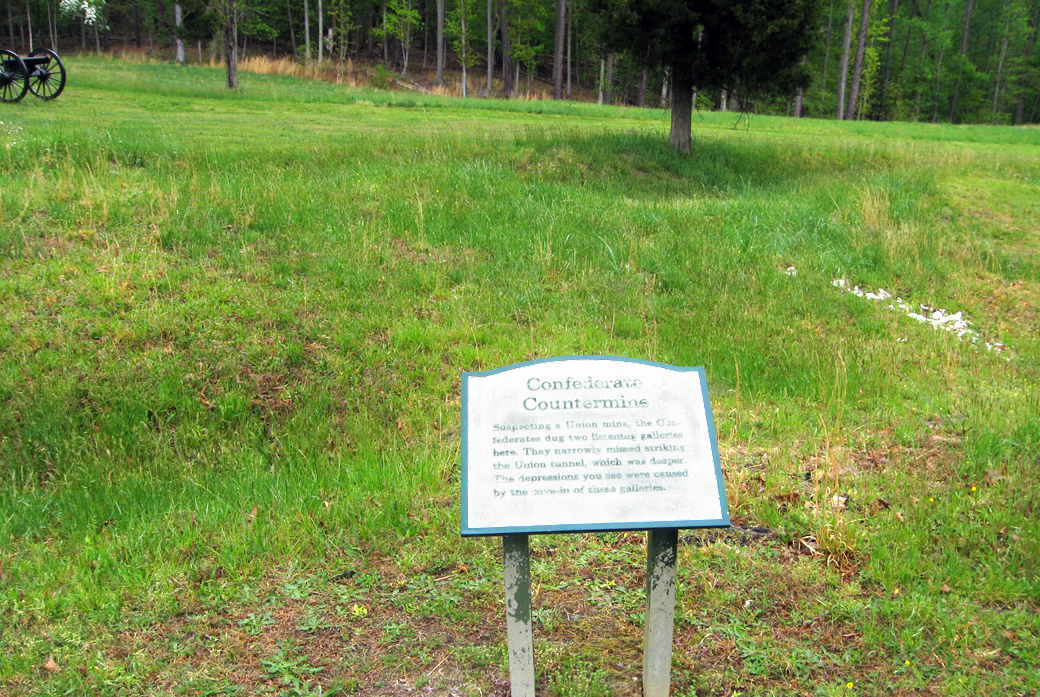Petersburg • East • Southeast • West • Monuments • Markers • Facts • Timeline
 A walking trail follows the path of the mine from the mine entrance up to The Crater. You can reach the mine entrance from the parking area and take another path back from The Crater.
A walking trail follows the path of the mine from the mine entrance up to The Crater. You can reach the mine entrance from the parking area and take another path back from The Crater.
(above) The mine entrance, with the mine trail leading up and over the slight hill to The Crater. The Digging the Mine wayside marker is to the left of the mine entrance. Near the top of the rise to the left of the path is the Ventilation Shaft wayside marker.

(above) A closer look at the Ventilation Shaft wayside marker. The collapsed ventilation shaft is next to the wooden post.

(above) Further along the trail a part of the tunnel has collapsed and shows the path of the mine. The advanced Union trenches were hidden from this point beneath the small ridge in the foreground. The main Union lines were on the higher ground across the valley. The railroad tracks which cross the valley from left to right were there during the Civil War. This was the railroad from Norfolk to Petersburg, little used since the Union capture of Norfolk in 1862.

(above) Near the top of the ridge the mine was almost found by a Confederate Countermine. The Confederate defenders knew the Federals were up to something and took countermeasures, including this countermine, a backup earthwork called a “cavalier” behind the main readout, and extensive backup and communication trenches behind the main line. Although the countermine failed, the other measures all contributed to to some extent to the failure of the Union attack.

(above) The mine split into two galleries in a “T” underneath what became The Crater. That whole area was blown into the air. Today the mine trail ends at the edge of the crater at The Crater and A Stupendous Failure wayside markers. The William Mahoney monument in the distance above the marker on the right is on the far side of The Crater and gives an idea of The Crater’s size.

Over 150 years later The Crater is still large and imposing. No one knows how many soldiers of both sides are still buried here.
